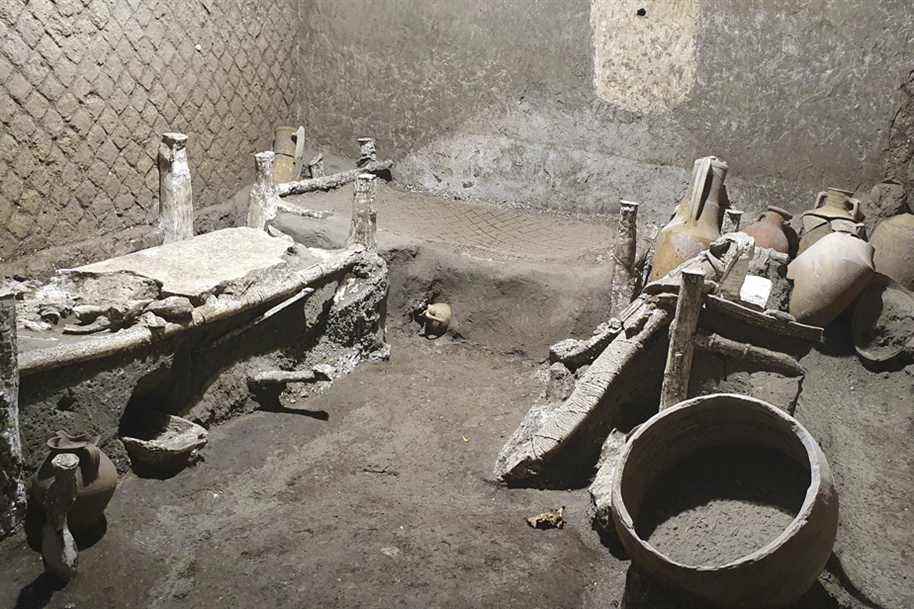(Rome) Les archéologues à Pompéi ont annoncé samedi avoir mis au jour les vestiges d’une « chambre d’esclaves », une découverte exceptionnellement rare dans une villa romaine détruite par l’irruption du Vésuve, il y a près de 2000 ans.
La petite chambre qui abrite trois lits dont l’un de la taille d’un enfant, huit amphores, un pot en céramique et un coffre en bois, a été découverte lors de fouilles dans une villa de Civita Giuliana, un quartier situé à quelques centaines de mètres au nord du parc archéologique de Pompéi, enseveli en 79 apr. J.-C..
C’est là qu’avait été découvert, en début d’année, un grand char de cérémonie, dans un excellent état. Selon les archéologues, la chambre était probablement occupée par des esclaves responsables de l’entretien du char.
« C’est une fenêtre sur la réalité précaire de ces gens qui apparaissent rarement dans les sources historiques, écrites presque exclusivement par des hommes appartenant à l’élite », a observé le directeur général du site archéologique de Pompéi, Gabriel Zuchtriegel.

PHOTO MINISTÈRE ITALIEN DE LA CULTURE ET DE L’HÉRITAGE VIA REUTERS
Ce « témoignage unique » sur la façon dont « les plus faibles de la société ancienne vivaient […] is certainly one of the most exciting discoveries of my life as an archaeologist, ”he added in a press release.
The room of 16 m2 was located between a bedroom and a storage room.
The wooden chest contained metal and fabric objects that appear to be part of the harnesses of the horses pulling the chariot. A tank axis was also found on one of the beds.
The tank had been discovered in a porch in front of a stable where, already in 2018, the remains of 3 equines had been found.
“This room, thanks to its exceptional state of conservation, offers us a rare glimpse of the daily reality of slaves”, underlines the archaeological park.
The beds are made of several roughly worked wooden planks, which could be adjusted to suit its occupant, and their webbed feet were made of ropes covered with blankets.

PHOTO ITALIAN MINISTRY OF CULTURE AND HERITAGE VIA REUTERS
Two beds were 1.70 m long and the third was 1.40 m long. According to the park authorities, the three slaves may have formed a family.
Under the beds, personal items were found, including amphorae and what could be a chamber pot.
The room was lit by a small upper window. There are no traces of wall decorations, just a mark possibly left by a lantern.
The excavations were carried out as part of a program to fight against grave robbers, particularly active in this area of Italy, full of archaeological treasures yet to be discovered.
Civita Giuliana’s villa has been the target of systematic looting for years, and it appears that part of the “archaeological heritage” of the “slave room” has been stolen by looters, according to the archaeological park.
